Regardless of Household Type, LGBT Adults Struggled More With Mental Health Than Non-LGBT Adults
THOM FILE AND MATTHEW MARLAY JUNE 16, 2022 (без впн не увидите)Lesbian, gay, bisexual, and transgender (LGBT) adults have consistently reported higher rates of symptoms of both anxiety and depression amid the coronavirus pandemic than non-LGBT adults, according to U.S. Census Bureau data.
The results were the same regardless of the period in question: LGBT adults ages 18 and older reported roughly twice the rate of mental health challenges as non-LGBT adults (Figures 1a and 1b).
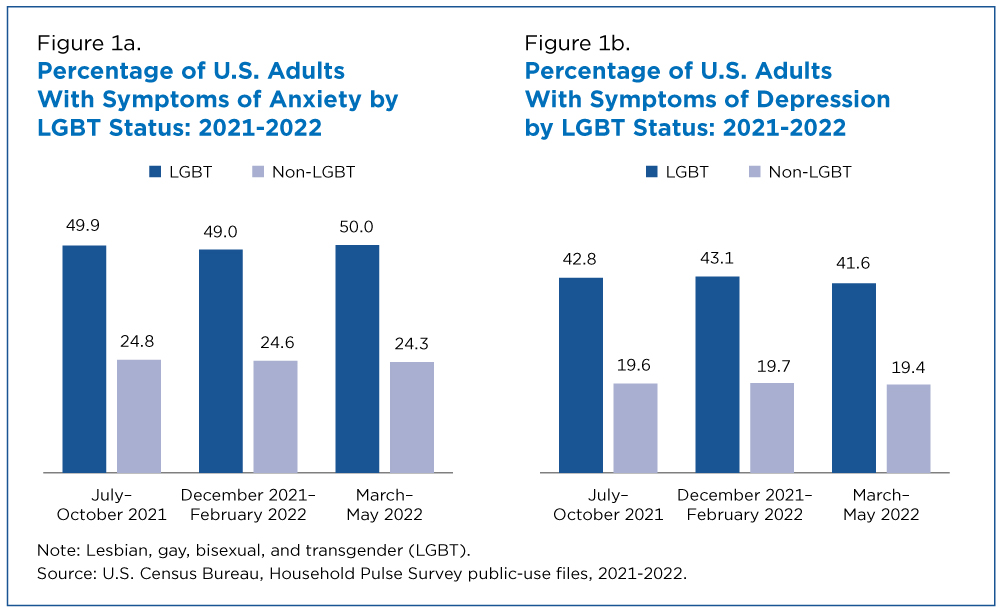
As previous research indicated, younger respondents were more likely to identify as LGBT. Future research will look at the intersection of age and mental health among respondents who identify as LGBT.
LGBT adults living in households with children were more likely than adults (regardless of LGBT status) in other types of households to report anxiety symptoms.
Household Pulse Survey and Mental Health
The Census Bureau’s Household Pulse Survey (HPS) provides insight into the mental health and well-being of its respondents.
Since the HPS began in April 2020, it has asked two questions related to symptoms of anxiety and two questions about symptoms of depression.
In July 2021, it also began asking about sexual orientation and gender identity (SOGI).
This analysis uses multiple data collection phases of the survey to assess the pandemic’s mental health toll on U.S. adults 18 years and older:
- Phase 3.2: July 21–October 20, 2021 (Approximately 6.2 million invitations sent, 382,908 responses, response rate of 6.1%).
- Phase 3.3: December 1, 2021–February 7, 2022 (Approximately 3.1 million invitations sent, 211,303 responses, response rate of 6.7%).
- Phase 3.4: March 2– May 9, 2022 (Approximately 3.1 million invitations sent, 209,694 responses, response rate of 6.7%).
Mental Health Challenges and Household Type
Previous Census Bureau research indicated that adults living alone during the pandemic were more susceptible to mental health challenges than those living with others, but this current analysis shows that when differentiating between LGBT and non-LGBT households, mental health disparities become more nuanced (Figures 2a and 2b).
Although the HPS does not collect information about all members of a household, it does ask about the presence of other adults and children. “Without kids” includes the adult respondent living with at least one other adult but no children; “with kids” includes the adult respondent living with children, either with or without other adults.
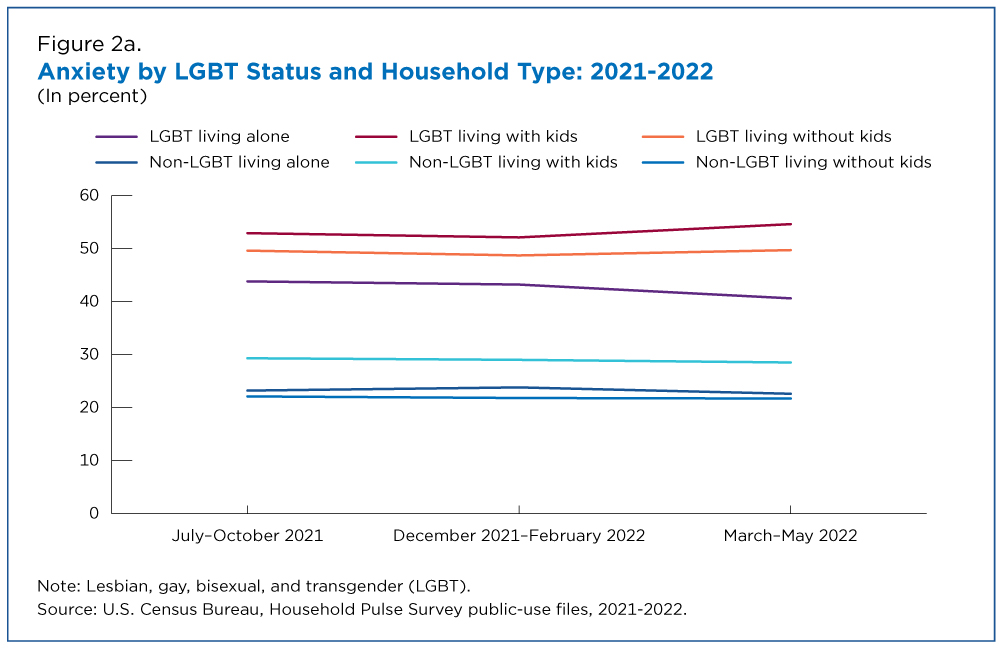
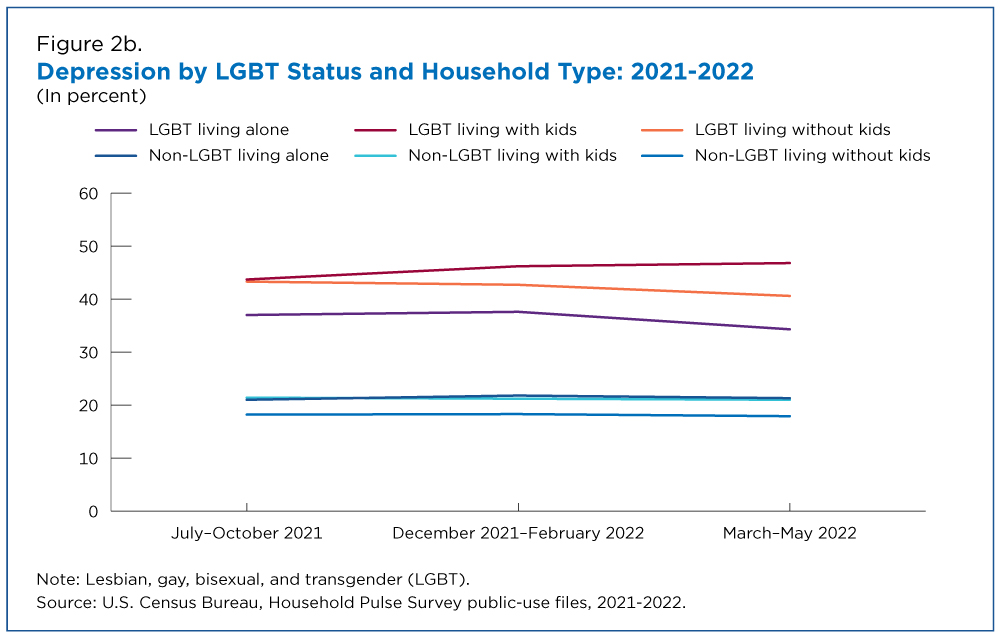
Throughout the time series, LGBT adults living in households with children were more likely than adults (regardless of LGBT status) in other types of households to report anxiety symptoms.
The depression results were slightly less definitive. But regardless of the mental health outcome in question or LGBT status, HPS data consistently pointed to mental health struggles being more pervasive for LGBT adults.
Whether it be adults living by themselves (Figures 3a and 3b), in households with children (Figures 4a and 4b), or in households without children (Figures 5a and 5b), LGBT adults reported higher rates of both anxiety and depression than their non-LGBT counterparts during Phases 3.2-3.4 of the survey.
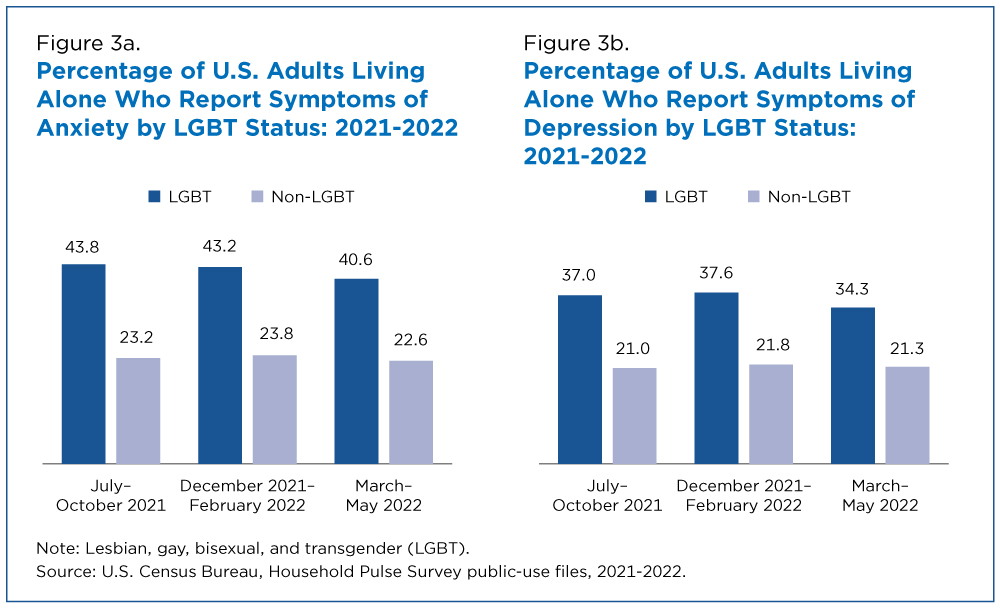
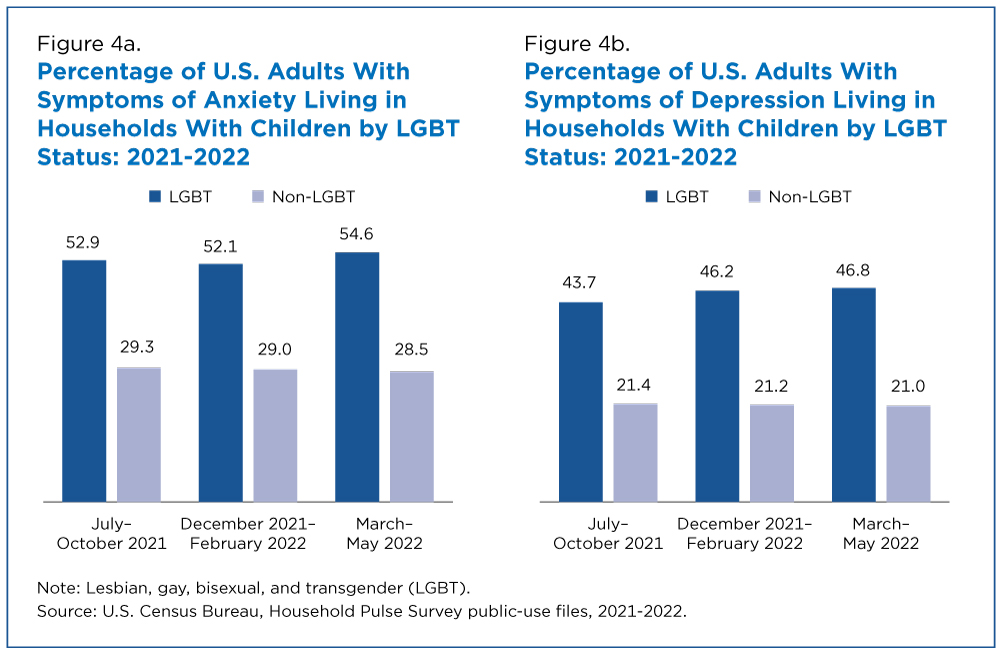
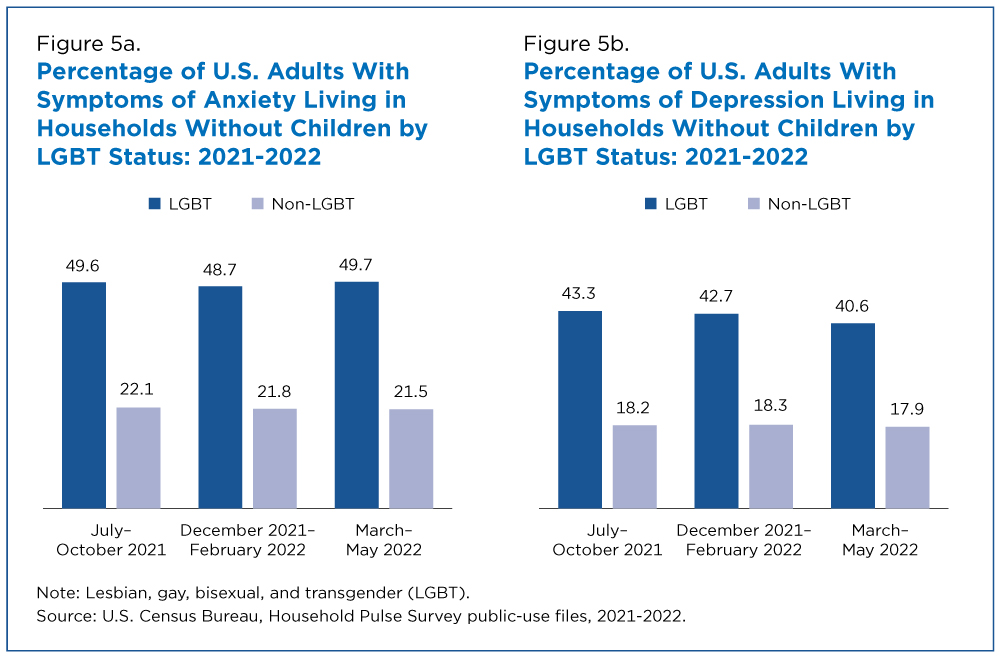
Defining LGBT
Earlier versions of the HPS asked respondents only for their sex (male or female). Since July 2021, the survey has included three separate SOGI questions.
The first asks about assigned sex at birth:
- What sex were you assigned at birth on your original birth certificate?
The next question asks about current gender self-identification:
- Do you currently describe yourself as male, female, or transgender?
Choice of answers: Male, Female, Transgender, or None of these.
The latest version of the survey also now asks about sexual orientation:
The latest version of the survey also now asks about sexual orientation:
- Which of the following best represents how you think of yourself?
Survey respondents are categorized as LGBT if they report a sex at birth that does not align with their current gender identity; report a sexual orientation of gay, lesbian, or bisexual; or if they currently identify as transgender.
Respondents whose sex at birth aligns with their current gender identity and who select Straight on the sexual orientation question are categorized as non-LGBT.
Respondents who select None of these on the current gender question and either Something else, I don’t know, or Straight on the sexual orientation question are categorized as “Other.”
Additionally, respondents whose sex at birth aligns with their current gender identity but who select either Something else or I don’t know on the sexual orientation question are also categorized as “Other.”
Survey questions related to sexual orientation and gender identity aim to understand the effect of the coronavirus pandemic across different subpopulations.
However, because the HPS is designed to rapidly produce experimental estimates, caution should be exercised when using these results as standalone markers of the prevalence of LGBT adults in the general population.
Measuring Anxiety and Depression
For mental health, the survey asks four questions, two relating to symptoms of anxiety and two relating to symptoms of depression.
These questions were developed in partnership with the National Center for Health Statistics (NCHS). This analysis follows an approach outlined by NCHS, which categorizes individuals based on how frequently they reported feeling anxious or depressed, consistent with diagnoses of generalized anxiety disorder or major depressive disorder.
Near Real-Time Data From HPS
The HPS is designed to provide near real-time data on how the pandemic has affected people’s lives. Information on the methodology and reliability of these estimates can be found in the Source and Accuracy statements for each data release. These statements also include information on the invitations and response rates.
Data users interested in state level sample sizes, the number of respondents, weighted response rates, and occupied housing unit coverage ratios can review the quality measures file, available on the Household Pulse Survey Technical Documentationwebsite. In comparison to other Census Bureau surveys, response rates for the HPS are low, and data users should exercise caution when interpreting estimates from the survey, especially with regards to the impact of potential non-response bias.
As a part of the Census Bureau’s experimental data series, the HPS was designed to have low respondent burden, provide quick turnaround on product releases, and produce estimates that meet urgent public needs. All estimates discussed here were calculated from public-use microdata files.
Thom File is a sociologist in the Census Bureau’s Social, Economic, and Housing Statistics Division.Matthew Marlay is a sociologist and demographer in the Social, Economic, and Housing Statistics Division.
No comments:
Post a Comment